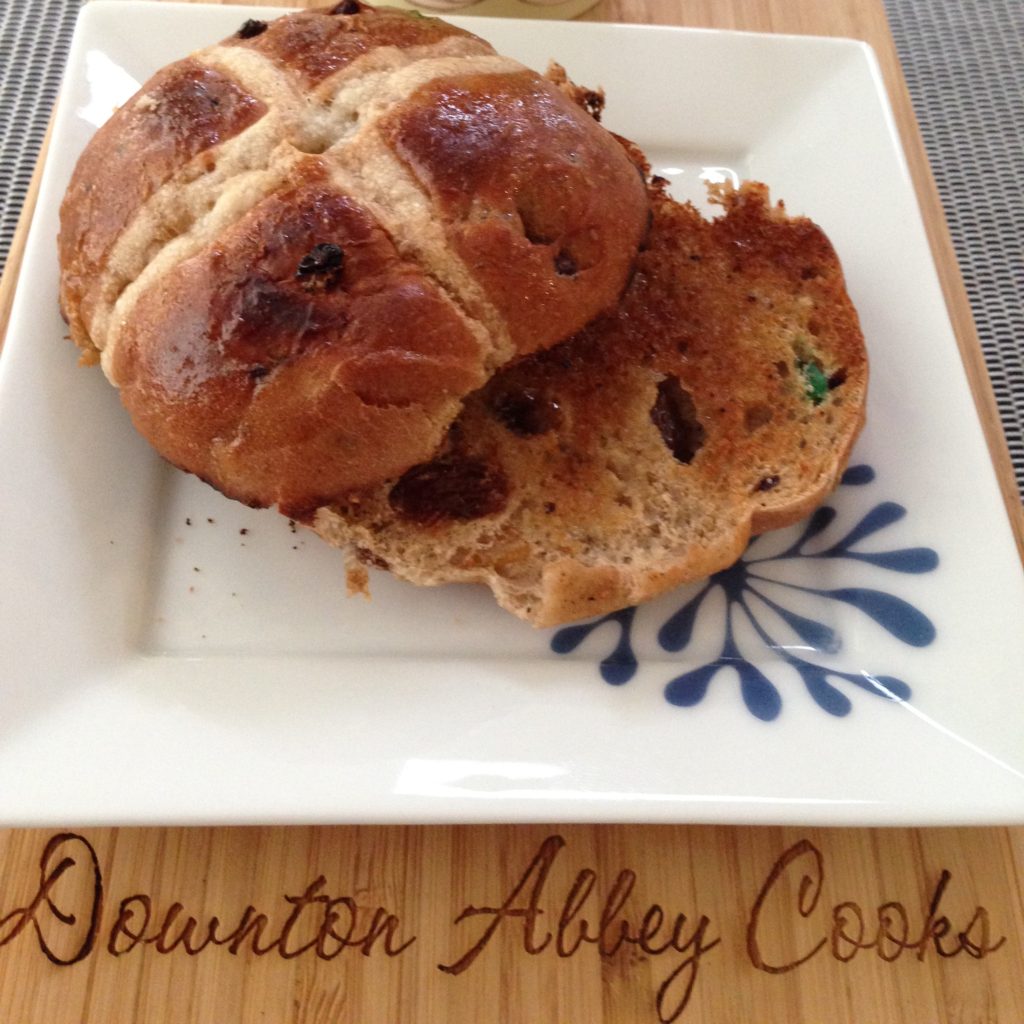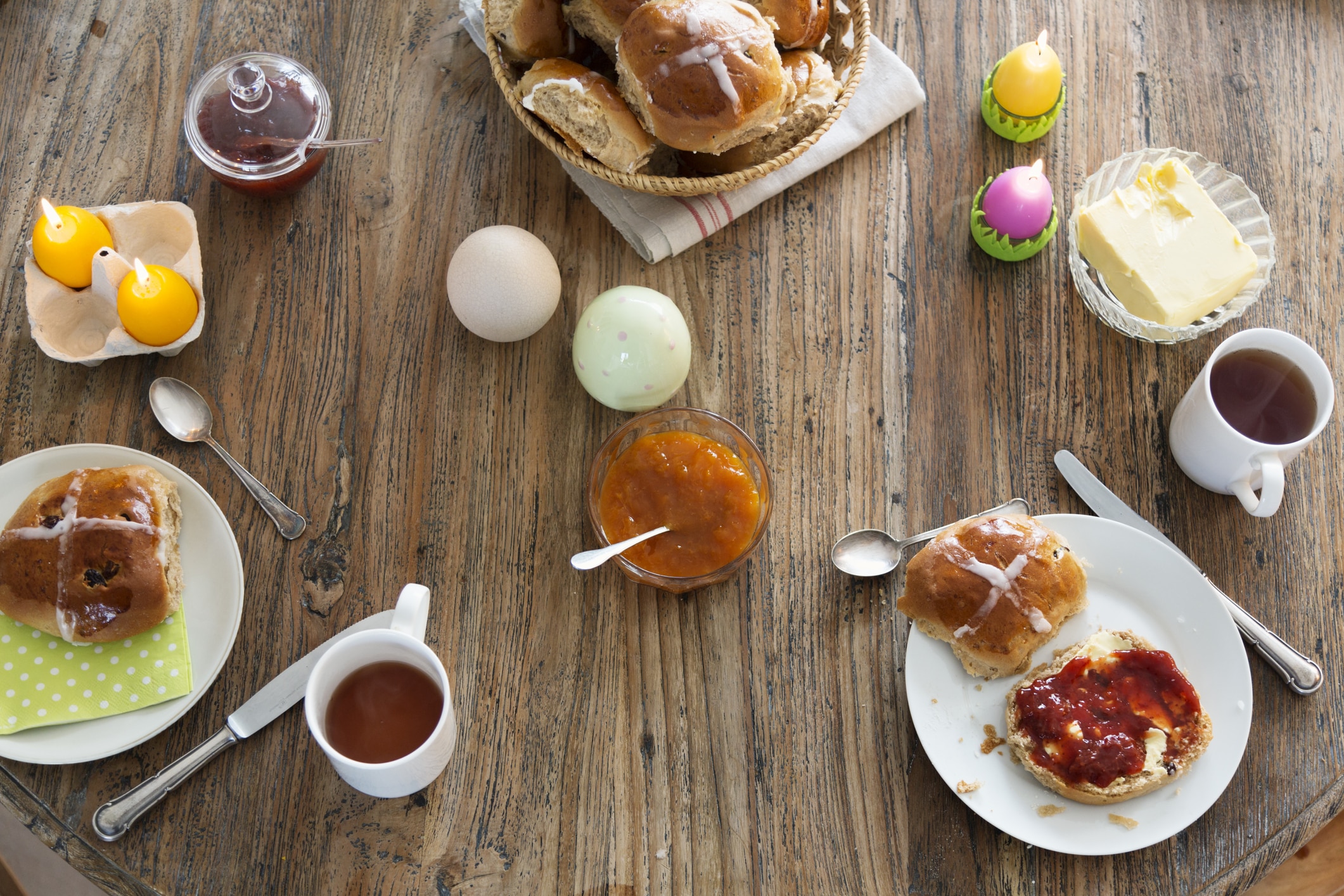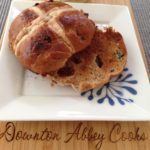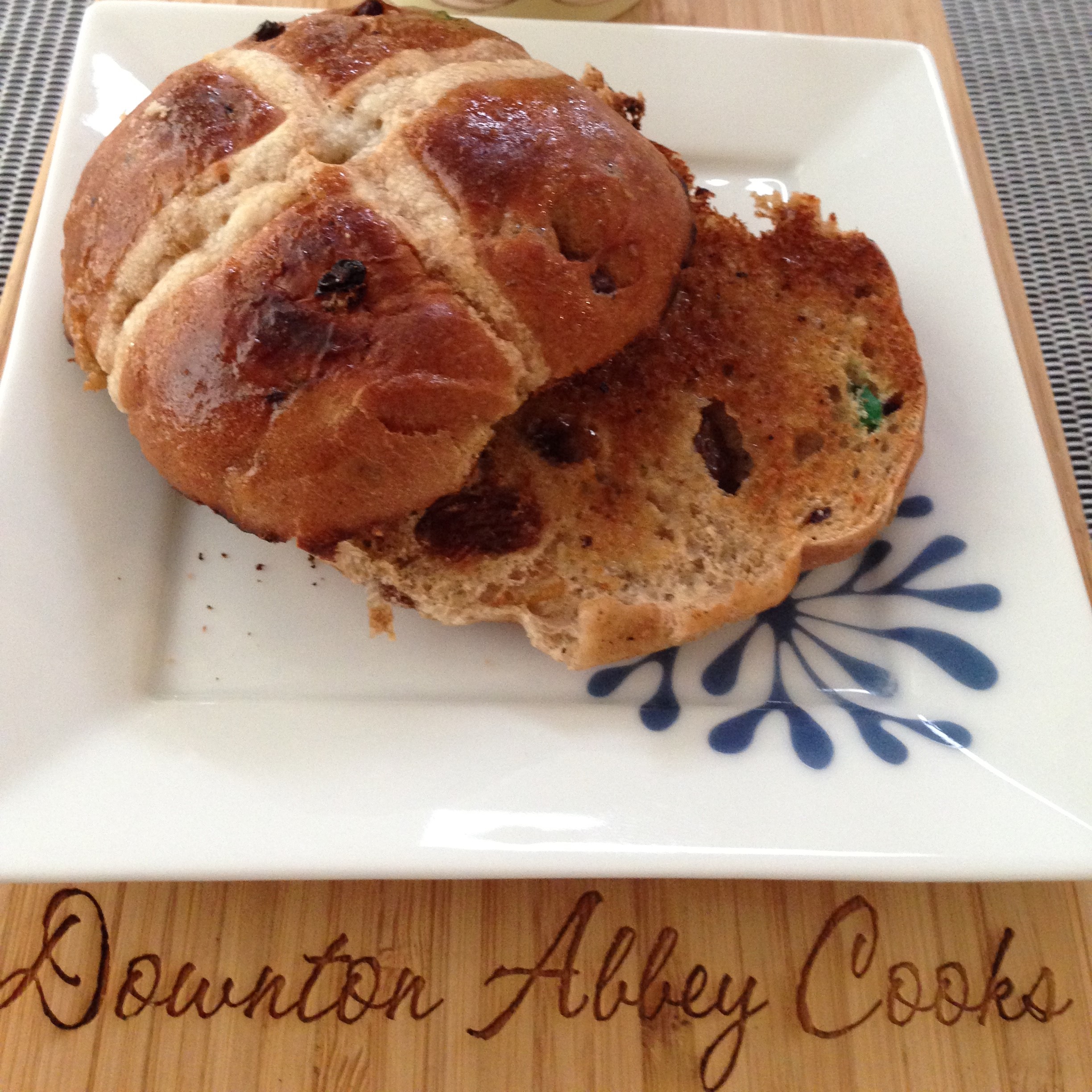What would Easter be without delicious hot cross buns? Hot cross buns are a type of spiced sweet bun that is traditionally eaten on Good Friday, which is a Christian holiday that commemorates the crucifixion of Jesus Christ. The buns are typically made with raisins or currants and are marked with a cross on top, which is made of a simple mixture of flour and water.
The exact origin of hot cross buns is unclear, but they are believed to have originated in England in the 18th century or earlier. One theory is that they were originally made by monks, who marked the buns with a cross as a symbol of their Christian faith.
Over time, hot cross buns became associated with Good Friday and Easter, and are now a traditional food of the holiday season. The cross on top of the bun is said to represent the crucifixion of Jesus Christ, and the spices in the bun are said to represent the spices used to embalm his body.
Today, hot cross buns are enjoyed by people of many different faiths and cultures, and are often available in bakeries and supermarkets throughout the Easter season.
Amazing Hot Cross Buns
Ingredients
- 1/2 cup warm water
- 1 tbsp. yeast
- 1 tsp. sugar
- 3/4 cup milk scalded
- 2 large eggs
- 1/2 cup sugar
- 1 tsp. salt
- 2 1/2 tsp. cinnamon
- 1/4 tsp. cloves
- 1/4 tsp. nutmeg
- 1 cup raisins
- 1/2 cup currants or chopped candied peel
- 1/4 cup unsalted butter melted
- 4 1/2 - 5 cups unbleached all purpose flour
Glaze
- 1 large egg
- 3 tbsp. caster sugar
Crosses
- 1/3 cup unbleached all purpose flour
- 5 tbsp. water
Instructions
Proof
- In a one-cup measuring cup, pour 1/2 cup warm water. Add 1 tsp. sugar, but do not stir. Slowly sprinkle the yeast into the water, ensuring that each particle gets wet. Do not stir. Wait 10 minutes until the yeast is thick and foamy.
Mix
- Add the following into a large bread bowl, stirring after each addition: milk which has now cooled, eggs, sugar, salt, cinnamon, cloves, nutmeg. Next add the yeast mixture, raisins, currants or peel, 1 cup of flour and the cooled butter and mix. Quickly add in the remaining flour one cup at a time to make a fairly stiff dough. Coat with flour before turning on a floured work surface to knead.
Knead
- Turn the dough out and knead until smooth and elastic which should take about 10 minutes.
First Rising
- Place the dough into a greased bowl. You can use your bread bowl after it has been cleaned. Turn over the dough so that the top is now greased as well. Cover with a clean tea towel and put in a warm place until doubled which will take about 1 1/2 hours.
Shape
- Punch the risen dough and turn out onto a floured surface. Shape into a 12-inch long log. Cut the dough into equal pieces to make 12 or 16 buns, depending on the size you like.
2nd Rising
- Work each piece of dough into smooth, seamless balls. Place buns on two greased baking sheets leaving an each between each bun. Press each to flatten slightly. Cover with a clean tea towel and let rest for 30–45 minutes in a draft-free place, or in your oven.
Bake
- Preheat your oven to 375F.
- Mix the egg with caster sugar to make an egg glaze. Brush buns with the egg glaze. Mix the flour and water to make the paste for the crosses. Pipe the crosses onto the buns.
- You can skip this step and score a cross in the bun and then finish after baking with thick icing to pipe a cross onto each bun after the buns have been baked and cooled.
- Bake for 15-18 minutes. Cool immediately on a wire rack.
What Else to Serve at Easter?



